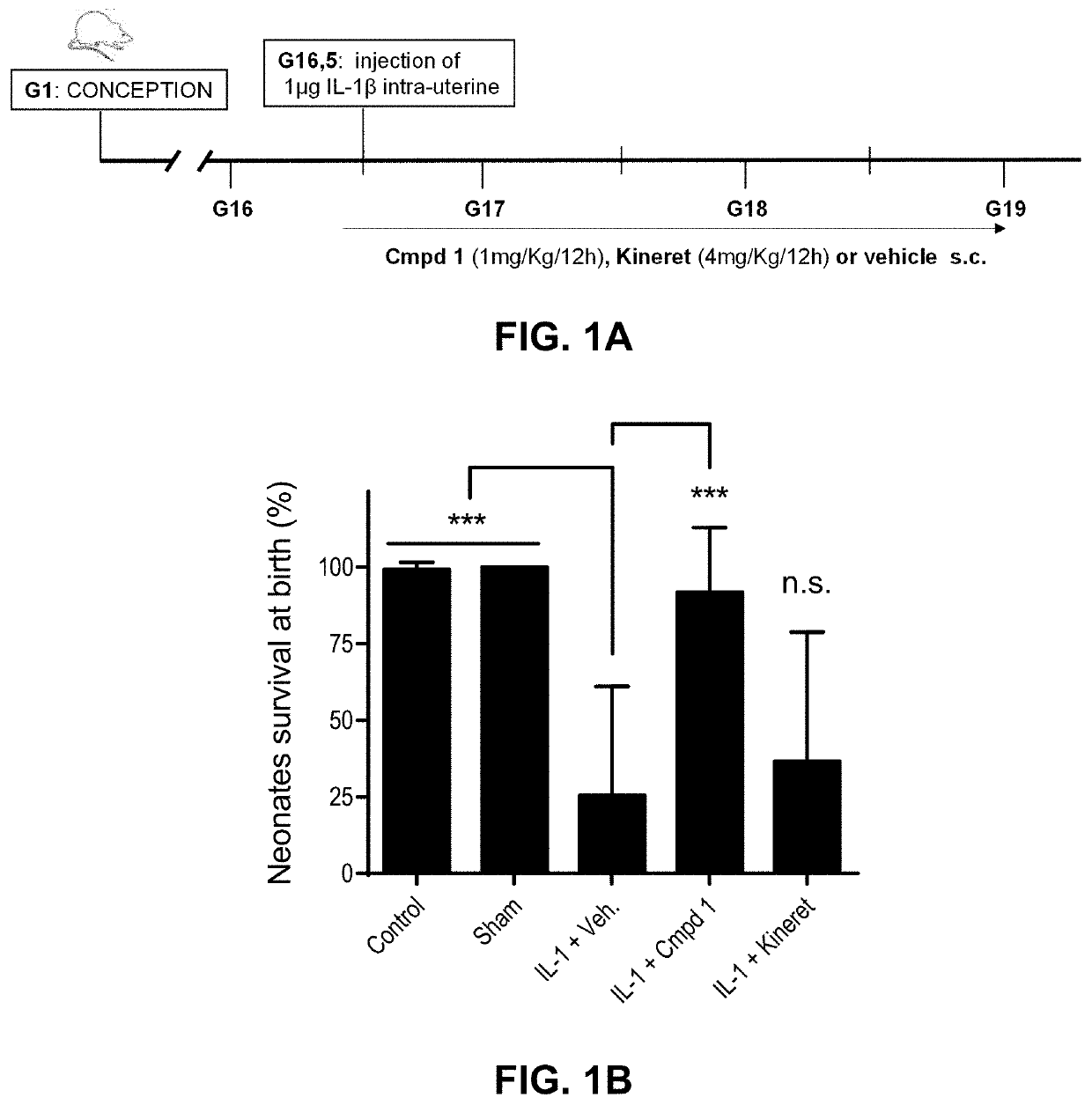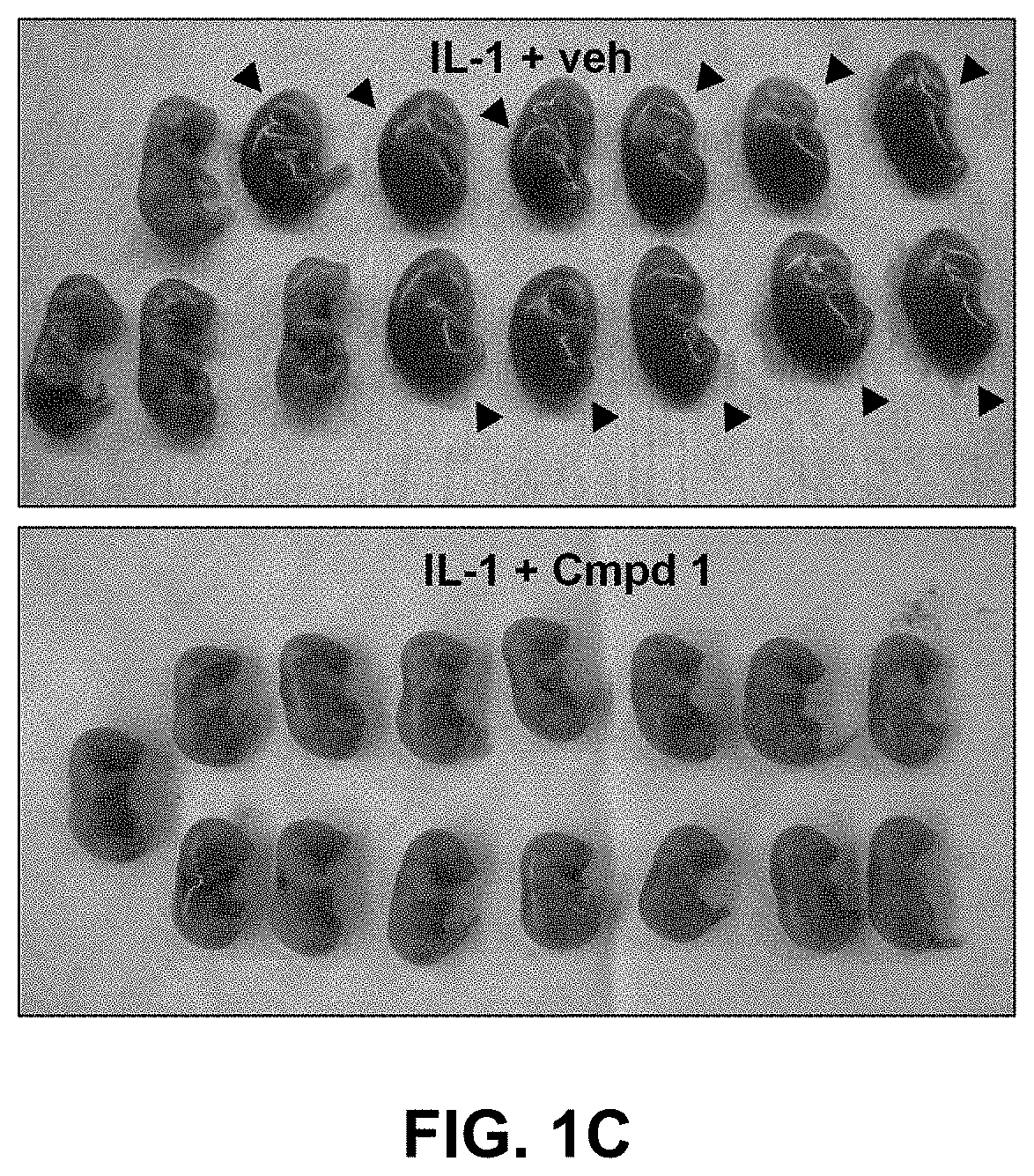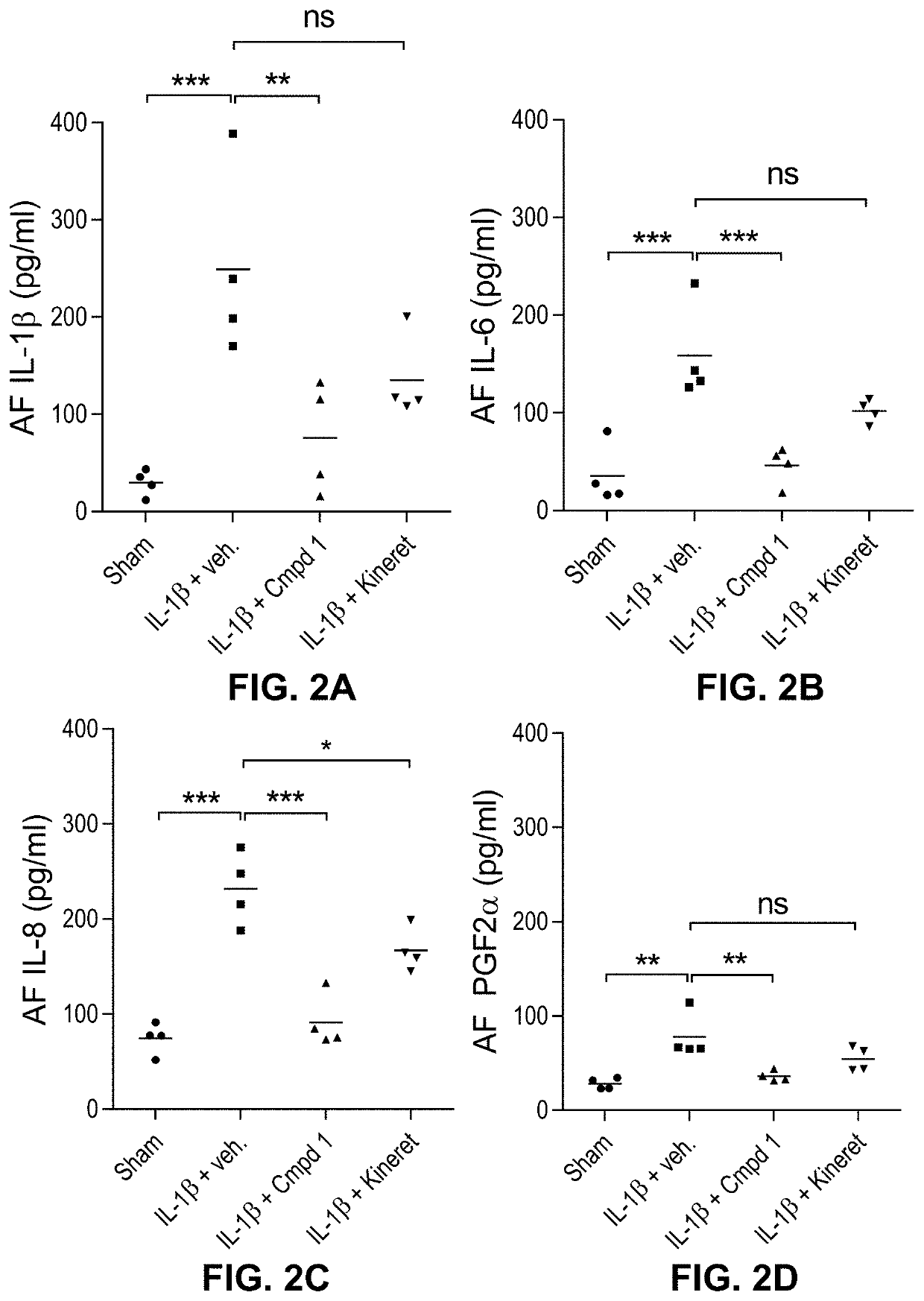Methods for Reducing Perinatal Morbidity and / or Mortality
a technology of applied in the field of neonatal diagnosis, can solve the problems of increasing the risk of perinatal organ damage, few effective preventive or therapeutic interventions, and often occurring perinatal morbidity and mortality
- Summary
- Abstract
- Description
- Claims
- Application Information
AI Technical Summary
Benefits of technology
Problems solved by technology
Method used
Image
Examples
example 1
1 Improves Pups Survival in a Perinatal Fetal Inflammation Model
[0090]A. Material and Methods
[0091]Compounds: Compound 1 was purchased from Elim Biopharmaceuticals (Hayward, Calif.), and Kineret® was purchased from Swedish Orphan Biovitrum AB (Sobi) (Stockholm, Sweden).
[0092]Intrauterine IL-1,6-induced perinatal inflammation model. Timed-pregnant CD-1 mice at 16.5 days of gestation were steadily anesthetized with an isoflurane mask. After body hair removal from the peritoneal area, a 1.5 cm-tall median incision was performed with surgical scissors in the lower abdominal wall. The lower segment of the right uterine horn was then exposed and 1 μg of IL-1β was injected between two fetal membranes with care of not entering the amniotic cavity. The abdominal muscle layer was sutured and the skin closed with clips. One hundred μL of Compound 1 (1 mg / Kg / 12 h), Kineret® (4 mg / Kg / 12 h) or vehicle (sterile water) was injected subcutaneously in the neck 30 minutes before stimulation with IL-1β...
example 2
1 Prevents the Accumulation of IL-1β-Induced Pro-Inflammatory Mediators in the Amniotic Fluid (AF)
[0095]A. Material and Methods
[0096]Murine ELISA assays. The ELISA assay was performed using mouse Quantikine™ ELISA kits against IL-1β or IL-6 (R&D Systems®; #MLBOOC, M6000B), IL-8 and PGF2α (MyBioSource®; #MBS261967, #MBS264160) according to the manufacturer's instructions. Briefly, 50 μL of either amniotic fluids, recombinant mouse IL-1β, IL-6, IL-8 or PGF2α positive control or decreasing concentrations of a recombinant mouse IL-1β, IL-6, IL-8 or PGF2α standard were loaded into a 96-well plate pre-coated with a monoclonal anti-mouse IL-1β antibody and incubated for 2 hours at ambient temperature. Wells were washed 5 times and incubated with an enzyme-linked mouse polyclonal antibody specific to murine IL-1β for 2 hours. After another washing step, a substrate solution was added. The enzymatic reaction was stopped after 30 minutes and the plate was read at 450 nm, with wavelength corre...
example 3
Administration of Compound 1 Decreases Cytokines and Injuries Due to Inflammation in Neonatal Organs
[0099]A. Material and Methods
[0100]Murine ELISA assays. The ELISA assay was performed using mouse Quantikine™ ELISA kits against IL-1β or IL-6 (R&D Systems®; #MLBOOC, M6000B), IL-8 and PGF2α (MyBioSource®; #MBS261967, #MBS264160) according to the manufacturer's instructions. Briefly, tissues (lungs, intestines and brains) collected at birth were homogenized in RIPA buffer containing proteases and 50 μL of either lung, intestine, or brain samples, recombinant mouse IL-1β, IL-6, IL-8 or PGF2α positive control or decreasing concentrations of a recombinant mouse IL-1β, IL-6, IL-8 or PGF2α standard were loaded into a 96-well plate pre-coated with a monoclonal anti-mouse IL-1β antibody and incubated for 2 hours at ambient temperature. Wells were washed 5 times and incubated with an enzyme-linked mouse polyclonal antibody specific to murine IL-1β for 2 hours. After another washing step, a su...
PUM
| Property | Measurement | Unit |
|---|---|---|
| wavelength | aaaaa | aaaaa |
| flow rate | aaaaa | aaaaa |
| volume | aaaaa | aaaaa |
Abstract
Description
Claims
Application Information
 Login to View More
Login to View More - R&D
- Intellectual Property
- Life Sciences
- Materials
- Tech Scout
- Unparalleled Data Quality
- Higher Quality Content
- 60% Fewer Hallucinations
Browse by: Latest US Patents, China's latest patents, Technical Efficacy Thesaurus, Application Domain, Technology Topic, Popular Technical Reports.
© 2025 PatSnap. All rights reserved.Legal|Privacy policy|Modern Slavery Act Transparency Statement|Sitemap|About US| Contact US: help@patsnap.com



